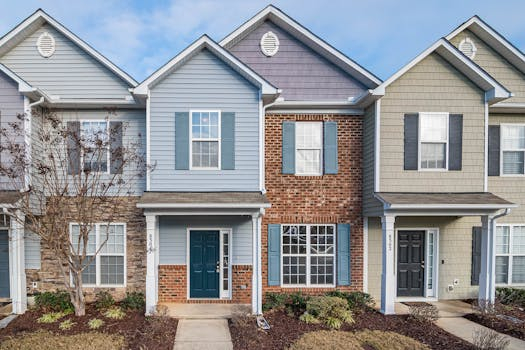Housing Affordability Initiatives: Government Programs and Subsidies
Housing affordability is a major concern for many people around the world, especially in countries with high housing costs. As the cost of living continues to rise, finding affordable housing has become increasingly difficult for low and middle-income individuals and families. In response to this issue, governments have implemented various housing affordability initiatives, including programs and subsidies aimed at making housing more accessible. In this article, we will take a closer look at these initiatives and how they are helping to address the housing affordability crisis.
What is Housing Affordability?
Before delving into the specific government programs and subsidies aimed at improving housing affordability, it’s important to understand what the term actually means. Housing affordability refers to the ability of individuals and households to secure and maintain adequate housing without being overburdened by housing costs. This includes not only the cost of rent or mortgage payments, but also other associated expenses such as utilities and maintenance.
Affordable housing is typically measured as a percentage of an individual or household’s income. According to the U.S. Department of Housing and Urban Development (HUD), housing is considered affordable when it costs no more than 30% of the household’s income. However, for many low and middle-income households, housing costs can far exceed this threshold.
The Housing Affordability Crisis
The lack of affordable housing has become a significant issue in many countries, with both urban and rural areas experiencing a housing affordability crisis. In cities, rising housing costs are often fueled by factors such as population growth, limited housing supply, and increasing demand. In rural areas, the issue may be lack of affordable housing options or inadequate infrastructure and services.
According to the National Low Income Housing Coalition, there is a shortage of 7 million affordable and available rental homes for extremely low-income renters in the United States alone. This means that for every 100 extremely low-income households, there are only 36 affordable and available rental homes. In other words, nearly 2 out of 3 low-income households are struggling to find affordable housing.
Government Programs for Housing Affordability
Public Housing
Public housing is a government-funded program that provides affordable rental homes for low-income individuals and families. These housing units are owned and managed by public housing agencies (PHAs) and are typically located in urban areas. Eligibility for public housing is based on income level, and tenants pay no more than 30% of their income towards rent.
Housing Choice Vouchers
Housing Choice Vouchers, also known as Section 8 vouchers, are another government program aimed at increasing housing affordability. These vouchers provide rental assistance to eligible low-income individuals and families, allowing them to rent homes from private landlords at an affordable rate. The voucher covers the difference between the actual rent and the amount the tenant can afford to pay.
Low-Income Housing Tax Credits
To encourage the development of affordable housing, governments often provide tax credits to developers who build or rehabilitate low-income housing units. These tax credits are sold to investors, who can then use them to offset their tax liabilities. In return, developers agree to keep the rent on these units affordable for a set period of time.
Section 521 Rural Rental Assistance
In rural areas, the U.S. Department of Agriculture (USDA) provides rental assistance to very low-income households through the Section 521 Rural Rental Assistance program. The program primarily serves elderly and disabled individuals and families, providing them with affordable housing in rural communities.
Subsidies for Affordable Housing
Low-Income Housing Subsidies
In addition to government programs, there are also various subsidies available to help low-income individuals and families afford housing. These include benefits such as rental assistance, subsidies for energy costs, and assistance with home repairs and modifications for individuals with disabilities or mobility issues.
Tax Incentives for Affordable Housing Developers
To encourage the development of affordable housing, governments may also offer tax incentives to developers. These can include tax credits, reductions, or exemptions, as well as favorable financing options. These incentives help offset the financial challenges developers face in providing affordable housing.
Conclusion
The housing affordability crisis is a complex issue that requires a multifaceted approach. Government programs and subsidies are crucial in making housing more accessible for low and middle-income individuals and families, but they are not the only solution. It’s also essential for governments to address the root causes of the housing affordability crisis, such as income inequality and lack of affordable housing options. Through a combination of efforts, we can work towards creating a more equitable and accessible housing market for all.









